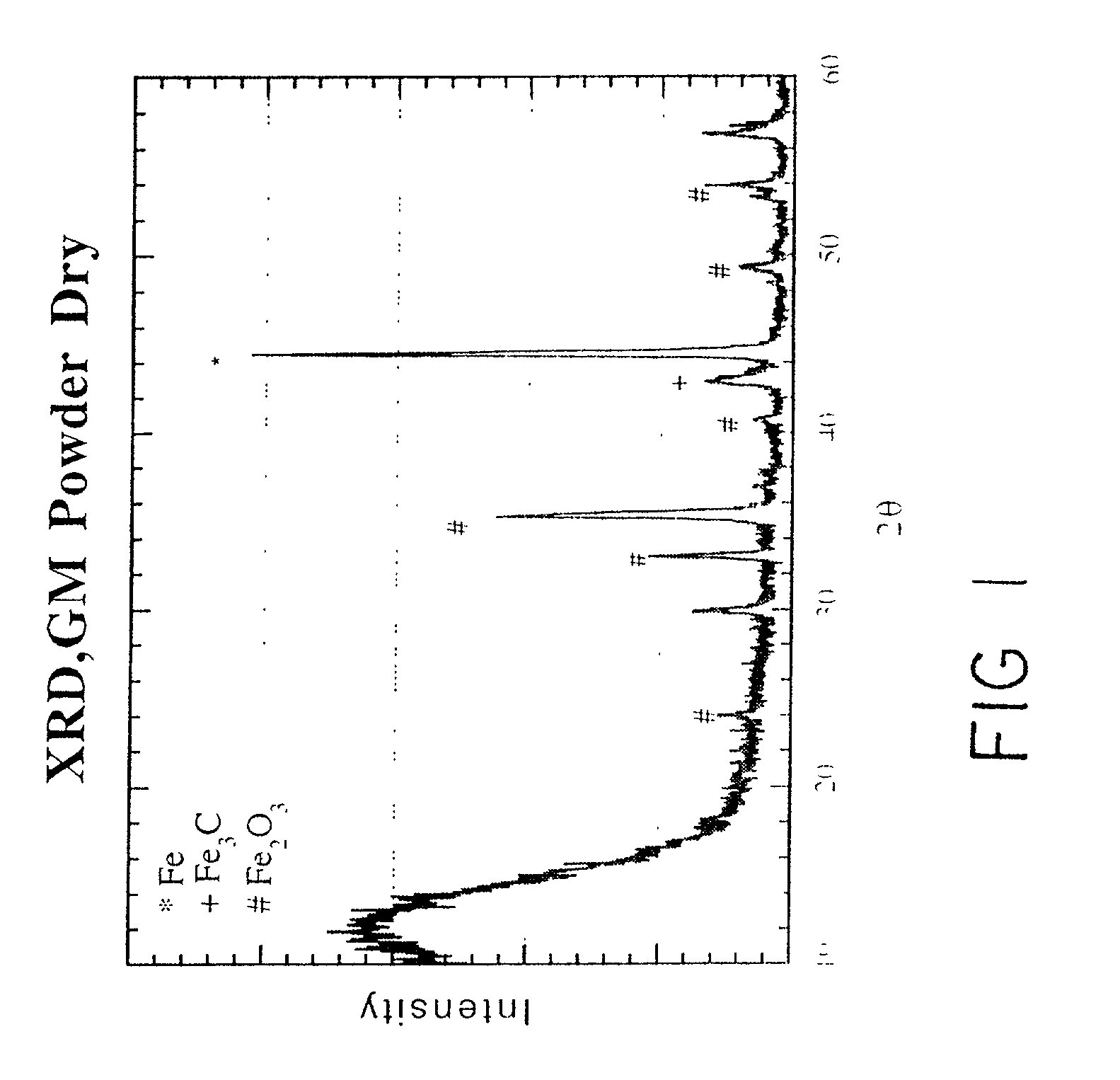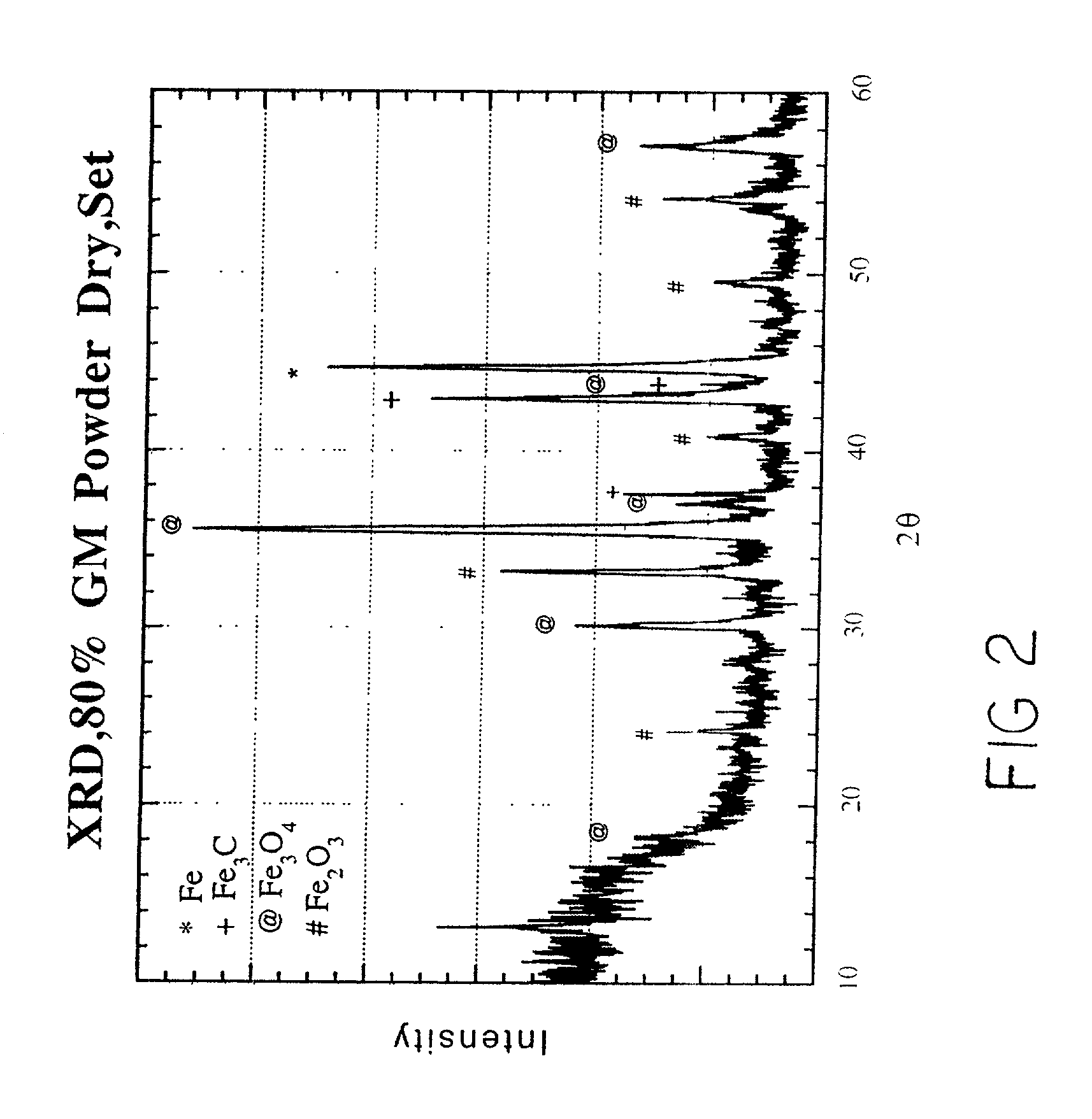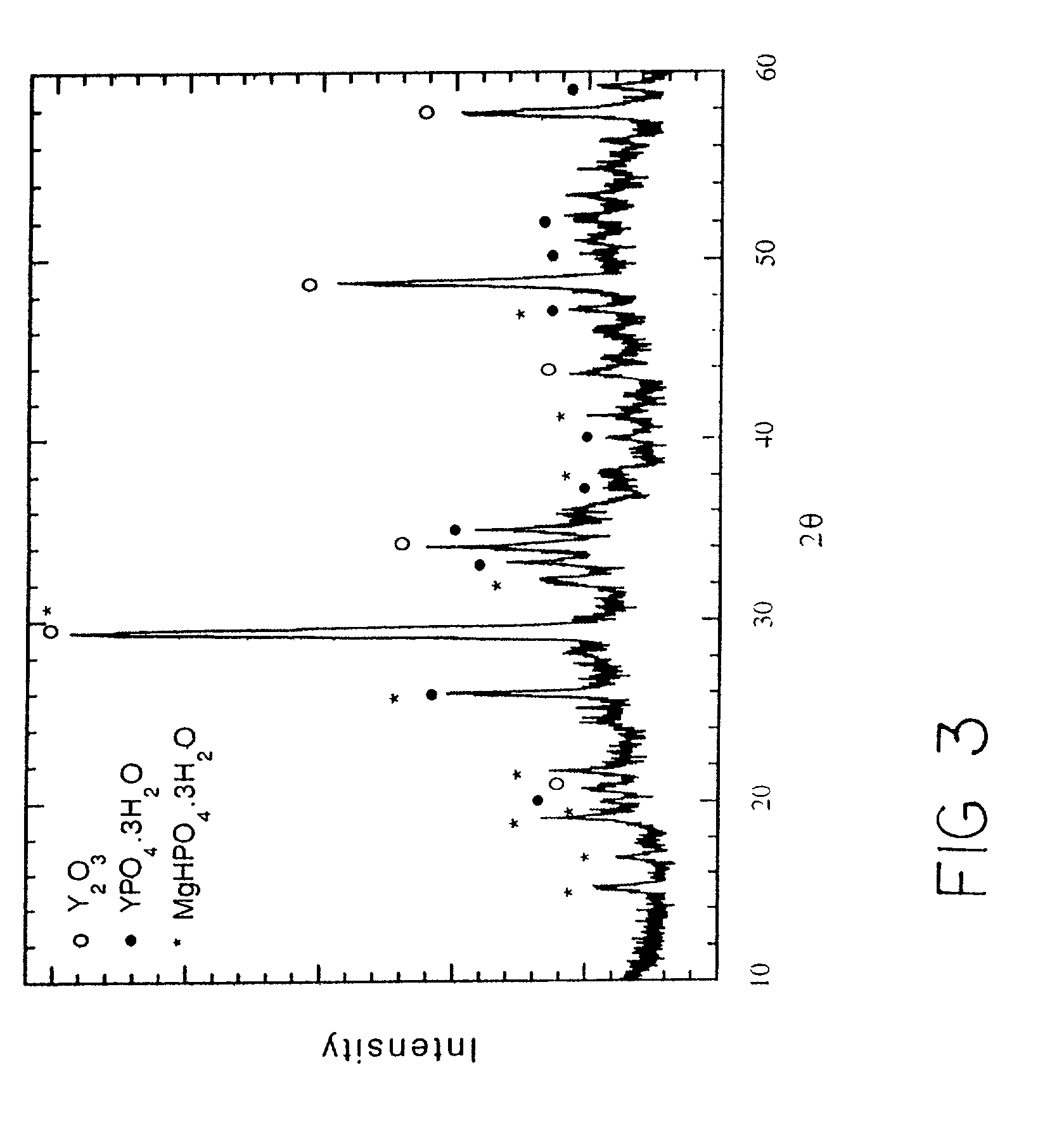Formation of chemically bonded ceramics with magnesium dihydrogen phosphate binder
a phosphate and magnesium dihydrogen technology, applied in the direction of climate sustainability, nuclear engineering, solid waste management, etc., can solve the problems of crack propagation, low compactibility of materials, poor flexural and fracture properties of materials, etc., and achieve low solubility, less energy, and less cost
- Summary
- Abstract
- Description
- Claims
- Application Information
AI Technical Summary
Benefits of technology
Problems solved by technology
Method used
Image
Examples
example 2
Compacting Ashes
[0075] A number of different ashes were used which included high chloride content fly ash, bottom ash and low chloride content Class F fly ash. These ashes were radioactively contaminated chloride-containing ashes from various U.S. Department of Energy (DOE) sites. In each case, a small amount of water was added to moisten the mixture. Briquettes of dimensions 2".times.2".times.1" were made using these ashes along with the MHP binder. As with the swarf, each sample formed was a briquette of dimensions 2".times.2".times.1", and was placed under pressure for 2 minutes at a pressure of 1000 psi, thus reducing its volume. Each briquette was stored in a polyethylene bag for 3 weeks. The samples were cured for one full week and were then cut into 1".times.1".times.1" cubes for which compression strengths were measured. The results of the strength measurements are given in TABLE 2 which also contains results for briquettes made with MKP.
2TABLE 2 Compressive strengths of ash...
example 3
[0078] Containing Waste Forms
[0079] Yttrium oxide was thoroughly mixed with pre-mixed MHP dry mixture in a weight ration of 1:2. Water was then added to the powder mixture at a weight ratio of powder to water of 3:1. The resultant slurry, viscosity of 200 cp, was mixed for 15 minutes until it warmed slightly to .about.40.degree. C. due to the exothermicity of the process, and subsequently set into a hard ceramic within 10 minutes. As such, the slurry provides an exothermic reaction, which aids in the setting reaction.
[0080] The ceramic formed in this Y.sub.2O.sub.3 protocol has a density of 1.78 grams per cubic centimeter (g / cc) and its open porosity is .about.5% giving the same density-porosity characteristics of MKP binder with various encapsulated wastes. However, because Y.sub.2O.sub.3 is less than sparsely soluble, the invented MHP process is the best means to form a ceramic of this oxide and other rare earth oxides with similar solubilities.
[0081] FIG. 3 shows a X...
example 4
Magnetite-Containing Ceramic Waste Forms
[0082] Magnetite based ceramics have been made in the past by the direct reaction of magnetite and aqueous phosphoric acid solution., The reaction is rapid and very exothermic which creates difficulties when attempting to form large monoliths. This problem may be overcome by using MHP as the binder.
[0083] Magnetite and MHP powder were mixed thoroughly in a weight ratio of 1:2 of magnetite to MHP. Water was added in a weight ratio of 1:3 of water to mixture. The resultant slurry, viscosity of 200 cp, was mixed for .about.15 minutes until the mixture's temperature began to increase. The slurry was then poured into molds after which it set within an hour and formed a dense and hard ceramic. The ceramic has a density of 1.71 g / cc and an open porosity of 4.6%. This particular magnetite ceramic is a lightweight material.
[0084] FIG. 4 shows the X-ray diffraction pattern of the ceramic formed. Peaks are directly observed only for Fe.sub.3O.sub.4 ("x")...
PUM
| Property | Measurement | Unit |
|---|---|---|
| wt. % | aaaaa | aaaaa |
| temperatures | aaaaa | aaaaa |
| temperatures | aaaaa | aaaaa |
Abstract
Description
Claims
Application Information
 Login to View More
Login to View More - R&D
- Intellectual Property
- Life Sciences
- Materials
- Tech Scout
- Unparalleled Data Quality
- Higher Quality Content
- 60% Fewer Hallucinations
Browse by: Latest US Patents, China's latest patents, Technical Efficacy Thesaurus, Application Domain, Technology Topic, Popular Technical Reports.
© 2025 PatSnap. All rights reserved.Legal|Privacy policy|Modern Slavery Act Transparency Statement|Sitemap|About US| Contact US: help@patsnap.com



